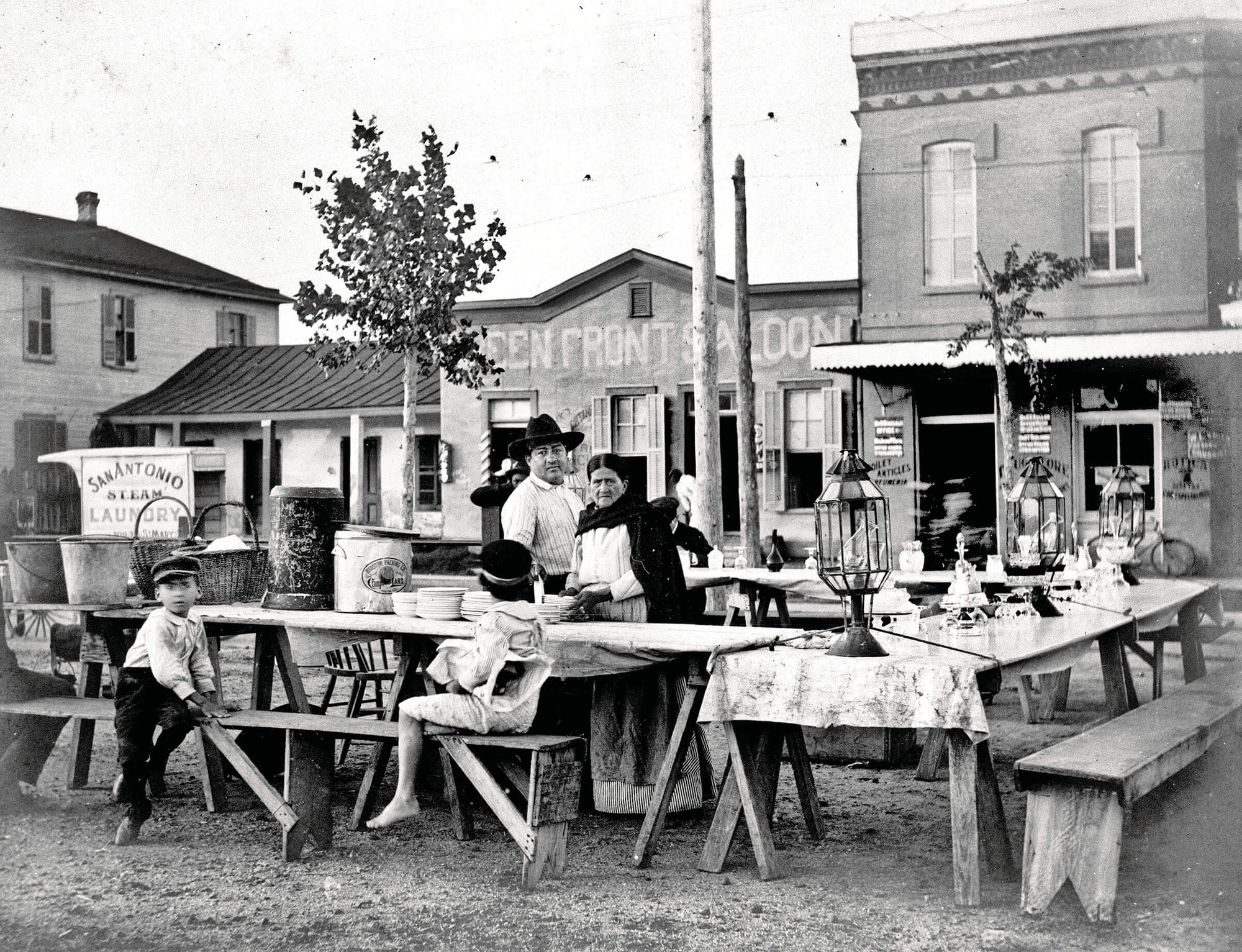

· By Chamoy City Limits
Street Food & The Chili Queens of San Antonio
Street food has a rich history in the United States, dating back to the early days of colonial settlements. The evolution of street food reflects the diverse culinary traditions brought by immigrants, cultural influences, and the changing urban landscape. One notable aspect of American street food history is the emergence of the chili queens, who played a significant role in popularizing street food culture in the late 19th and early 20th centuries.
During the 19th century, street food in America primarily consisted of simple fare such as oysters, roasted chestnuts, and hot corn on the cob. These items were sold by vendors who operated from carts or stalls in bustling urban areas. As cities grew and industrialization took hold, street food became an integral part of the urban experience, catering to the needs of workers and busy city dwellers.
The chili queens were a group of Mexican and Mexican-American women who became iconic figures in the street food scene of San Antonio, Texas, in the late 19th century. These entrepreneurial women set up their food stalls, known as "chili stands," in Military Plaza, a central gathering place for locals and visitors alike.
The chili queens gained fame for their spicy chili con carne, tamales, and other Mexican dishes. They would cook these mouthwatering delicacies over open fires and serve them to customers seated at communal tables. People from all walks of life would flock to Military Plaza in the evenings, transforming it into a vibrant social hub filled with laughter, music, and the tantalizing aroma of Mexican cuisine.
The chili queens' food was beloved by locals and attracted tourists, soldiers, and even writers such as O. Henry, who immortalized them in his short story "The Enchanted Kiss." The popularity of the chili queens and their unique street food offerings helped establish San Antonio as a culinary destination.
However, the chili queens' reign eventually came to an end. In the early 20th century, city officials and health authorities became concerned about sanitation and hygiene issues associated with street food vendors. In 1937, the city council passed an ordinance prohibiting the chili queens from operating in Military Plaza, effectively bringing an end to their era.
Despite their displacement, the legacy of the chili queens and their impact on American street food culture lives on. Today, street food in the United States has evolved into a vibrant and diverse scene, influenced by a multitude of cultures and cuisines. Food trucks, carts, and pop-up stalls can be found in cities across the country, offering a wide array of culinary delights to hungry patrons.
In recent years, there has been a resurgence of interest in street food, with many chefs and entrepreneurs embracing the format as a way to showcase their creativity and culinary skills. Food festivals, night markets, and dedicated food truck parks have become popular venues for discovering and enjoying street food from different cultures.
The chili queens' story remains an important part of American culinary history, reminding us of the cultural contributions and entrepreneurial spirit of immigrants, as well as the enduring appeal of delicious, affordable, and accessible street food.
